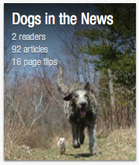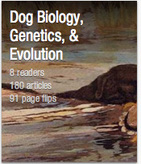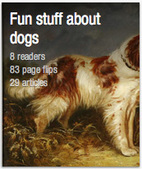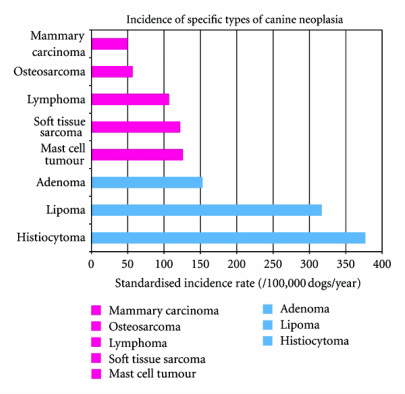
Cancer is a significant problem in dogs, and although all breeds of dog and crossbred dogs may be affected, some breeds of dogs appear to be at increased risk of certain types of cancer suggesting underlying genetic predisposition. This paper reviews the literature on canine breed susceptibility to histiocytic sarcoma, osteosarcoma, haemangiosarcoma, mast cell tumours, lymphoma, melanoma, and mammary tumours, and also includes the recent advances in knowledge through molecular genetic, cytogenetic, and genome wide association studies. (pdf)
Dobson, JM 2013 Breed-predispositions to cancer in pedigree dogs. ISRN Veterinary Science Vol 2013 (2013), Article ID 941275, 23 pages.
Dobson, JM 2013 Breed-predispositions to cancer in pedigree dogs. ISRN Veterinary Science Vol 2013 (2013), Article ID 941275, 23 pages.
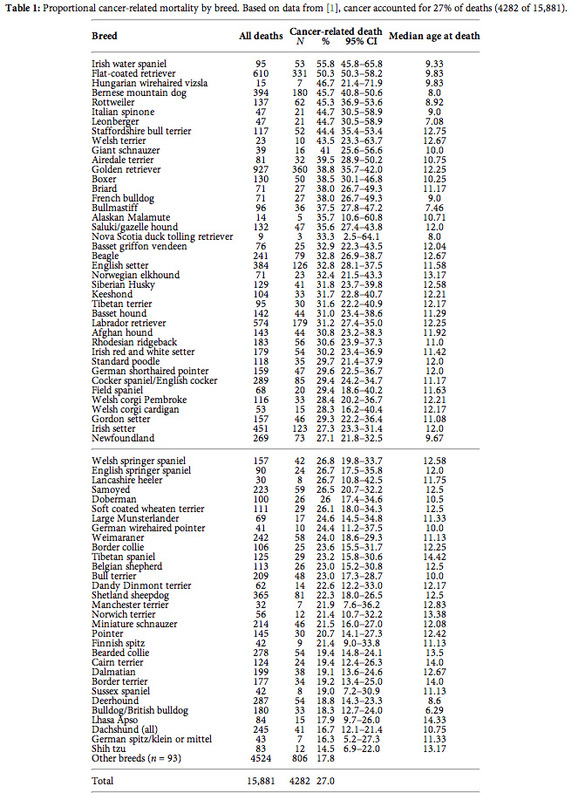
 RSS Feed
RSS Feed
